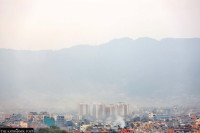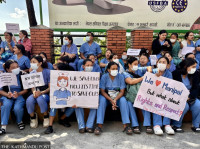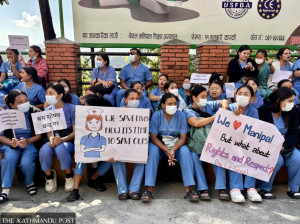Editorial
Saving newborns
One of Nepal’s recent public health achievements is the decline in neonatal deaths, defined as the death of a live-born infant during the first 28 days after birth. This gain is particularly notable because Nepal had been struggling to bring down the number of neonatal deaths for over a decade.
One of Nepal’s recent public health achievements is the decline in neonatal deaths, defined as the death of a live-born infant during the first 28 days after birth. This gain is particularly notable because Nepal had been struggling to bring down the number of neonatal deaths for over a decade.
According to the Key Indicators Report of the Nepal Demographic and Health Survey (DHS)-2016, the number of neonatal deaths in the country stands at 21 per 1,000 live births. Although the number is high when compared with figures from richer countries, it is a significant improvement for Nepal from the previous DHSs.
The DHS is an internationally recognised survey that is conducted in over 90 countries. It aims to generate information about fertility, family planning, adult and child mortality, maternal and child health, nutrition, women’s empowerment and domestic violence, knowledge of HIV and other health issues. In Nepal, the DHS has been carried out since 1996. The first Nepal-DHS showed the number of neonatal deaths to be 50. Four subsequent surveys revealed a figure of 39, 33, 33 and 21 respectively.
While Nepal had been internationally commended for its progress in reducing the number of deaths of pregnant mothers, its failure for many years to bring about a commensurate decline in the number newborn deaths had been ironic. The Ministry of Health’s earlier focus on pregnant women had succeeded in saving many mothers, but had failed to save the babies born to them.
Such approach was rightly criticised, compelling the ministry to review its programme and create new interventions aimed at saving neonates. For example, in its community intervention programme now, the ministry trains health professionals on treating newborn illnesses and provides mothers with a package called Nyano Jhola that includes warm clothes for the mother and the child.
Another key factor driving neonatal deaths down is the notable increase over the years in the number of women visiting healthcare facilities for delivery. While only 9 percent of mothers delivered their baby in health facilities in 2001, the number shot up to 57 percent in 2016. The number of births attended by skilled health professionals also went up from 11 percent in 2001 to 58 percent in 2016.
These are significant gains that must be accelerated. It’s usually the women from the poorest backgrounds and the remotest regions who are at a higher risk of losing their newborn babies. The ministry should work continuously to ensure that its interventions reach every mother so that far fewer families have to endure the heartache of losing a child.




 17.12°C Kathmandu
17.12°C Kathmandu














